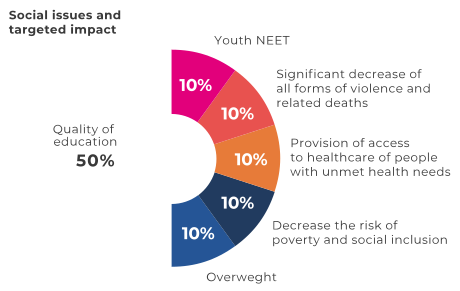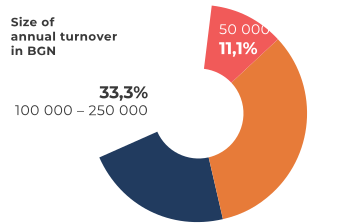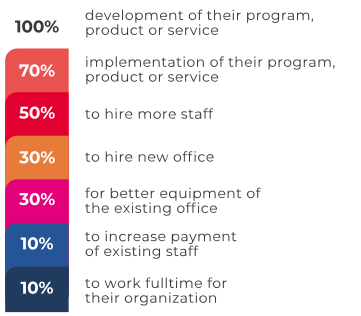Are you an investor exploring opportunities to back social entrepreneurs? This tool will give you an overview of the key considerations we can keep in mind when assessing their potential for impact on society and the environment.
How to identify high-potential social entrepreneurs.
The tips and tricks you will find here are based on the experience of Reach for Change in identifying and selecting social entrepreneurs in 3 continents since 2010.
Are you an investor exploring opportunities to back social entrepreneurs? This tool will give you an overview of the key considerations we can keep in mind when assessing their potential for impact on society and the environment.
Here you will find:
Definition of social entrepreneur
The project “Valley of Growth” focuses on initiatives in the early growth stage. For the purposes of the project, these social enterprises should fit within the following criteria:
The project team decided to keep the definition more inclusive and consider all initiatives regardless of their legal entity.
However, initiatives operating under a legal entity registered under the Commercial Act were considered with priority.

Profile and Characteristics



![]() Lack of human resources and operational capacity
Lack of human resources and operational capacity
![]() Revising the business model
Revising the business model
![]() Processes management
Processes management
![]() Analysis of market structure and the audience
Analysis of market structure and the audience
![]() Equipment
Equipment
Here you can find additional information about the profile of the social enterprises in early growth stage in Bulgaria.
Social Impact
It is important to pay attention to the following signs, if your intention is to invest in social enterprises because of their potential for social impact. They indicate that the social entrepreneur is on track to develop or scale social innovation with significant potential for impact.

The social entrepreneur has an ambition to solve a pressing social issue. A frequent pitfall for early stage organizations is to come up with their solution - the product or service they are offering - and to try to match it to a social problem afterwards. The successful social entrepreneurs start with the problem and are willing to change their solution to address it more effectively. Usually, they are able to clearly and briefly explain what exactly is the societal problem they want to solve and to back up this with data that can demonstrate its scope and severity. They are also able to explain what are the root causes of the problem.

Effective solutions to social problems address the causes of the problem. Social problems are complex and ticklish (wicked problems). Many factors contribute to their existence and it is difficult to find a comprehensive solution for them. Effective solutions to social problems usually address the causes of their existence, not the problem itself. Before investing in a social entrepreneur, try to understand to what extent the proposed solution addresses the root causes of the problem

The solution offered by the social entrepreneur has the potential to solve or contribute to solving the social problem. It is important to have concrete indications that the solution has been implemented - even in a minimal version - with the target group, and that it really leads to the expected positive social change. Most organizations will share information about the scope of their activities - how many activities they have carried out, and how many people they have supported - but this does not say much about whether their approach is effective or not. Look for information that tells you that their approach is having the positive effect they want to achieve - e.g. specific stories that demonstrate what the situation was like before and after the intervention, or information about what percentage of participants changed their behavior after participating in the social entrepreneur's activity.
Business model
Even if a specific solution to a social problem has enormous potential, it will be difficult to implement if not supported by a working business model. At the same time, social entrepreneurs often have to develop innovative business models. This means that they often need more time to reach the point where the model is profitable compared to entrepreneurs that can use more established business models. Therefore, approaches for assessing the potential of innovations are more relevant for evaluating social-entrepreneurial business models. In practice, Reach for Change is guided by the 3-level model of matching the business model with market needs and looks for the following characteristics to assess whether a business model has potential:

The social entrepreneur has clarity about potential target customers. Often social entrepreneurs focus on the target groups who will benefit from the social impact of their solution, but those who become successful have an understanding and experience of the target groups who will pay for the service as well. The more information about the profile of paying customers an entrepreneur can share, and the more experience they have working with that particular group, the more likely they will be able to develop a model that works.

The social entrepreneur has begun validating the business model with customers. Often the business models of social entrepreneurs have a significant cost structure due to the activities related to achieving social impact. Therefore, it is possible that the organization has evidence that customers are willing to pay for the products and services offered, but has not yet reached the stage where they can generate a profit. To find out if there is evidence of development, try to find out what percentage of the products produced are bought, what percentage of customers who know the product exists make a purchase, and if there is demand for the product that they cannot satisfy, due to lack of capacity.

It is important to acknowledge that social impact can grow in parallel with the business model. The most successful social entrepreneurs are those who manage to develop a business model whose growth would go hand in hand with the growth of their social impact. Typically, there is a very close match between the groups that benefit from the social impact and those that pay, or the model allows the same resources to be used to create both social and business value.

For more information about the specifics of the social enterprises in Bulgaria, please see The social enterprenuership in Bulgaria on the way to growth
For more guidelines and tips on how to structure your strategy for investment in social impact see:
This tool is developed as part of the Valley of Growth project. The Valley of Growth is a cross-sectoral project which aims at boosting the development of the finance market for social enterprises in Bulgaria. The project is initiated by Reach for Change Bulgaria in partnership with Unicredit Bulbank, Forbes Bulgaria, The Business Institute, ING Bank, and The Municipal Guarantee Fund for SMEs (MGFSME) and funded by the European Union Programme for Employment and Social Innovation "EaSI''. Find out more about the project here.
Reach for Change was founded in 2010 to find and support local social entrepreneurs around the world to develop and scale innovative solutions that help children and youth to reach their full potential. Since 2010, we have supported more than 1,200 local social entrepreneurs across 18 countries, from Sweden to Ethiopia, from Ghana to Bulgaria. Their solutions have reached more than 4.3 million children and youth.